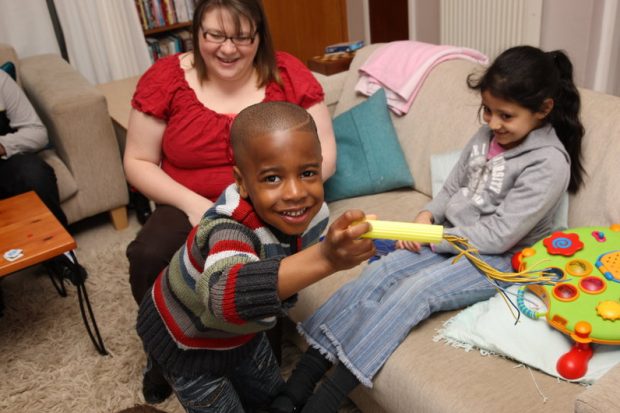
In October last year, I blogged about how good-quality supervision is central to effective social work. Now, I’m moving on to another pillar of good social work practice: case recording.
Let’s start with the unhelpful myth that inspectors take the view that ‘if it isn’t written down, it didn’t happen’. That’s not case!
Lots of things happen in a child’s life. Of course, not all of them have to be recorded in full. But the most significant events – for example, a placement move – should always be captured, so that the record properly reflects a child’s experiences and progress.
What is the purpose of case recording?
A well-crafted child’s record should be able to show what’s happening for a child at any given time. This means that a manager, new social worker or out-of-hours team can pick it up and immediately understand what a child needs.
The record should clearly and succinctly explain what has happened to and for the child. On one hand, this informs the support provided to the child today. But children one day become adults. Good records help them to understand what decisions were made during their childhood and why.
What does a good record look like?
Of course, a child’s record isn’t all in one place, even within the same system. It sits in assessments, reports to court and case conferences, review records, chronologies, records of visits to the child, direct work with the child and so on.
Some of these documents stand alone. But to really understand the child’s experience, the reader needs concise summaries that show the social worker’s professional analysis and evaluation. Through drawing the child’s lived experience together in this way, managers can then both hold practitioners to account and track children’s progress.
Most casework will include a huge amount of communication between professionals across many agencies. The best records will include this information but direct the reader to the outcome and how this has helped the child and their family.
The case record is not just a repository of information. It should be a tool that assists social workers in planning and making the best decisions for children. Description without analysis makes it so hard to understand how and why some critical decisions have been made.
Social workers and other practitioners who support children need to think about the purpose of each piece of recording. For example, when recording a visit to the child, the record is about the reason for the visit itself as well as its contribution to the whole assessment. The importance of not just what happened or was said, but what that means for the child.
Inspectors tell me that sometimes they read a child’s record and feel the child is not ‘visible’ in that record. Of course, if it is a very young child, the record will predominantly be about the help provided to parents. But however young, the record should clearly reflect the child’s experiences and the impact on them of any failure to properly meet their needs.
A good record will show children’s wishes and feelings and their understanding of what is happening in their life. Even though young children and those without verbal communication cannot talk about their feelings, recording observations of them is still very important.
An inspector recently said to me that when evaluating the quality and impact of social work practice, an excellent chronology becomes like a map that navigates you through a child’s life. It can be incredibly frustrating when its order does not make sense.
Really high-quality recording lets the quality of the relationship between social worker and child, and the social worker’s aspirations for that child, shine through. How important that must be to any care-experienced person looking at their childhood records in later adulthood.

What needs to improve?
Inspectors do find some common weaknesses. There really are no huge surprises here. They find records that:
- are not up to date (including assessments and plans following changes in circumstances), have gaps or lack analysis
- only focus on the very negative things that happen to children, rather than their lives as a whole
- are not bespoke to each child or use too much professional jargon
- show a lack of care and attention, or are just poorly written
- lack parents’ views or the level of their engagement
- do not show clear decision-making
- are not age appropriate
- mix up recording about brothers or sisters
- show little purpose for visits to children and families and do not influence the plan or the next steps
- fail to capture disabled children’s views
Do information recording systems help or hinder?
In October last year, we published the results of a survey of local authorities about their information recording systems. Many told us that their systems were poorly implemented or not working as intended.
Some said that workflows within the system mimic the order in which social workers carry out their work, which can lead to illogical and potentially misleading chronologies. For example, when something happens to a child but it is not reported – and therefore recorded – until a few days later, it means that it can become more difficult to distinguish between historical information and the current picture.
We often see repetition across the case recording system, from assessment, to plan, to case record. We see users cutting and pasting within records rather than adding their professional analysis. This does not help anyone!
In some places, it’s also questionable how much training social workers have had to help them use the system they have well.
Beware of pitfalls
On inspection, your case records, along with lots of other evidence, help us to understand the quality and impact of your practice in supporting children.
But beyond inspection, good case records are good for children. They help you do better work with them and mean that as adults they can make sense of their past.
Language is so important. Anything that implies victims were to blame for any abuse they suffered during childhood can compound the impact of that abuse. So can casual statements about ‘lifestyle choices’ by vulnerable teenagers. Times have changed, but we still sometimes see inappropriate language in case records.
When we communicate with each other, usually by email these days, we must avoid mentioning other children or redact this information before it becomes part of a child’s record.
I’ve used ‘the child’ here, but in a child’s record we should always use their gender pronoun. And although we should not shy away from describing the impact of parental behaviour, it’s important to not use language that might later be seen as judgemental.
Poor recording may be symptomatic of high caseloads and other pressures on social workers, but it’s still important to try and get it right. On a positive note, in most inspections, social workers describe the intent and impact of their work with children well, even if the records do not fully do it justice. We do give credit for this in our inspection findings.
So, who’s getting it right?
Some local authorities are doing great work in this area.
In Hampshire, we reported that social workers record their work with children diligently and sensitively, using a personalised and straightforward style of writing that demonstrates warmth and concern.
In Bexley, inspectors found records that demonstrate thoughtful exploration of whether a child in need plan or child protection plan is needed or whether the family well-being service could offer the most appropriate, proportionate and less intrusive support.
In Suffolk, case records showed how social workers routinely use tools to build relationships, communicate and ascertain children’s views, involving them as far as possible in decisions and plans.
Yvette Stanley is Ofsted's National Director for Social Care. Follow Yvette on Twitter. Keep up-to-date with social care news at Ofsted by signing up for email alerts. You can also follow Ofsted on Twitter.